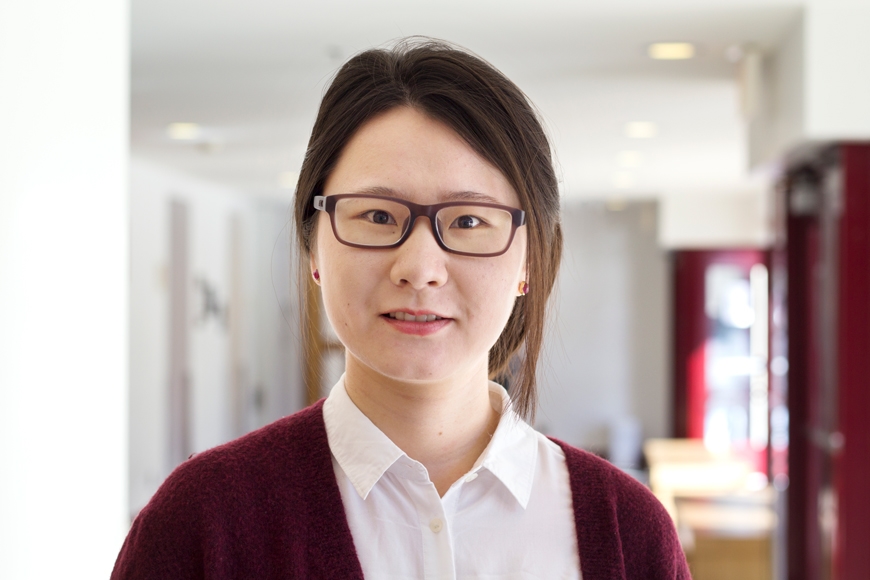Chinese Medicine in Kenya
For the past two summers, cultural anthropology graduate student Wei Ye has been immersing herself in Kenyan culture and exploring the presence of Chinese medicine. While it’s common to compare Western medical practices to traditional Chinese medicine, there aren’t many “non-biomedical” studies into how different medical systems work in other countries.
A Medical Background
Ye’s interest in medicine started early: her father is a biochemist, and many members of her family are pharmacists and doctors. Her interest in medical anthropology specifically came from her undergraduate research in Chinese medicine and her work in the social work department of a hospital in Shanghai. She also studied the Hmong population, who are a minority in China, and their indigenous medicine in comparison to Western and Chinese medicine.
“Traditional medicine is not just something from the past,” says Ye. “It’s constantly evolving and changing.” While Western medicine is clearly the dominant and most popular choice worldwide, she notes, that doesn’t necessarily mean it works “better.” The two different medicinal practices just work in different ways.
For example, Chinese medicine involves a “wholesome” view of the body, Ye says. “It doesn’t separate the body into parts—a sick person is not a machine,” she says. Instead of medications or surgeries, Chinese doctors may suggest eating healthier foods, exercising, and paying attention to how one feels mentally and emotionally.
Kenyan Culture and Chinese Impact
Ye wanted to study Chinese medicine in Kenya because China has historically had lasting connections with East Africa, she says. There have always been trans-continental connections in this area based on trade routes, the new communist government in China expanding and sending doctors to Africa and South America, and Chinese infrastructure, such as construction and businesses, there.
“I wanted to continue this study [of Chinese traditional and indigenous medicine], but wanted to explore traditional medicine other places,” says Ye. In her two summers in Nairobi, Kenya, Ye has stayed with both a local Chinese businesswoman, who was helping Chinese people get permits in Kenya, and at a friend’s place, conducting preliminary fieldwork.
Through making connections with potential interviewees, doctors, patients, and medical officials, Ye was able to “get a good sense of what was going on there [medically].” She talked to Chinese, Western, and Kenyan doctors, but found that the cosmopolitan society in Nairobi made it difficult to generalize anything about Kenyan culture.
“There are so many different communities and groups there,” says Ye, explaining that a combination of Christian, Jewish, and indigenous holidays are celebrated due to a Southeast Asian population having been there for a century and its former status as a British colony. “It’s not easily defined as one thing or another.”
Native Nairobians have their stereotypes of Chinese, European, and American presence, though, says Ye. She told a story of a ride in an Uber in Nairobi when the driver asked her if she was there “selling cell phones or working in construction.” When she answered no to both, he was perplexed—these are the most common reasons Chinese people come to Kenya. It’s the same for white people as well: “The Uber driver told me, ‘Whenever there are white people here, we always think they are doing Peace Corps or some other NGO thing.’”
These stereotypes are just like those we have here in the US, says Ye.
Sometimes, but not always, they can apply to how people choose medical support. Through her observations, Ye noticed that some people in Nairobi prefer Western medicine, some prefer Chinese medicine, and some prefer indigenous Kenyan practices. “Different people just have different opinions,” she says.
Kenyan doctors tend to be quite different than Chinese or Western medical practitioners, says Ye. Some advertise “finding your cow” or “finding love” rather than healing physical ailments, and other traditional doctors provide herbal prescriptions. Ye also describes the complications of the Kenyan Ministry of Health and the infamously corrupt government. “You can pay money to do anything,” says Ye, explaining that the prevalent corruption is sometimes seen as opportunities for business.
Examples and What’s Next
One prominent example of the Chinese medicine industry operating in Kenya is donkey hide farms. Donkey hides are used to make ejiao, a Chinese medicine most commonly used to treat women who feel cold or weak often. There are donkey hide farms all over the world, as the global price of donkey hide is going up—”it’s a good investment,” says Ye.
After staying at the farm for a few nights, Ye was able to learn more about the process. The main reason she studies ejiao is not because it is different from Western medicine, but because the industrial creation process is actually very similar to Western manufacturing. “The making of the traditional medicine itself is similar to globalized manufacturing and production processes,” she says.
Ye was able to do all of her research by way of grants and programs offered by the U and organizations such as the Social Sciences Research Council. Ye was selected to participate in a dissertation writing workshop—the Dissertation Proposal Development Program—organized in part by Karen-Sue Taussig, chair of the department, and is currently applying to multiple other grants to fund a year of additional research in Kenya.
She hopes to return to connect with the four or five family-owned Chinese medicine clinics she’s talked with, the owners of the donkey hide farm, and others to continue exploring how populations in different countries deal with different dominant medical fields.
“Everyone deals with health differently,” says Ye.
This story was written by an undergraduate student in CLA.



